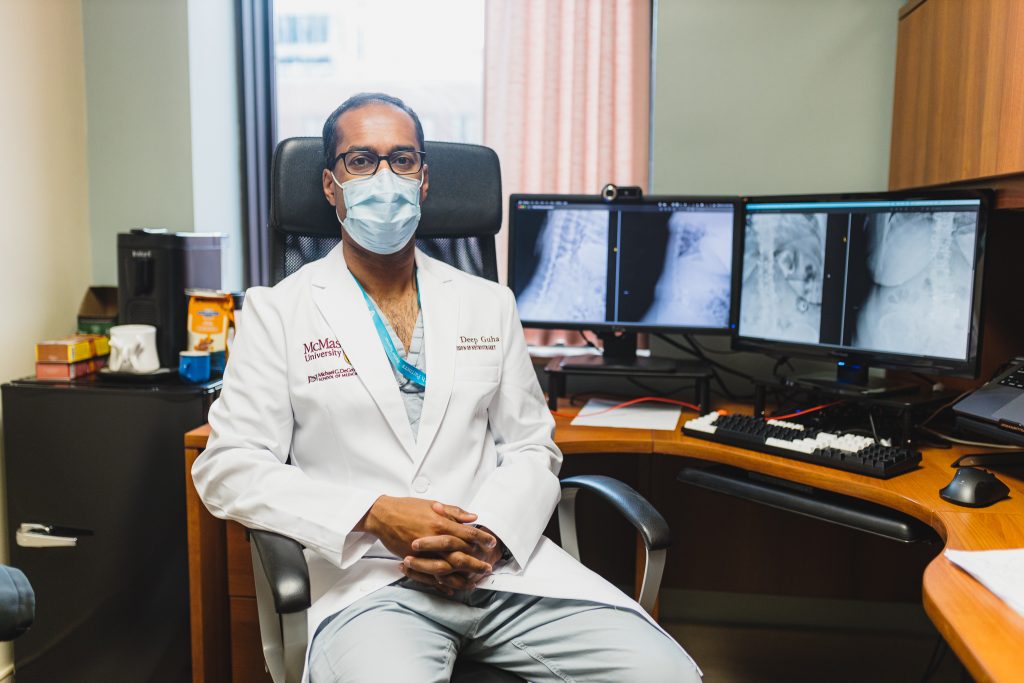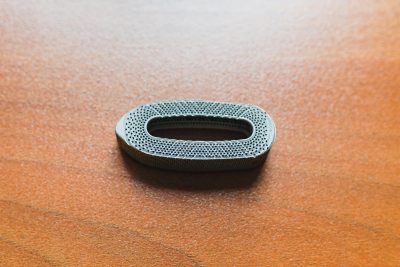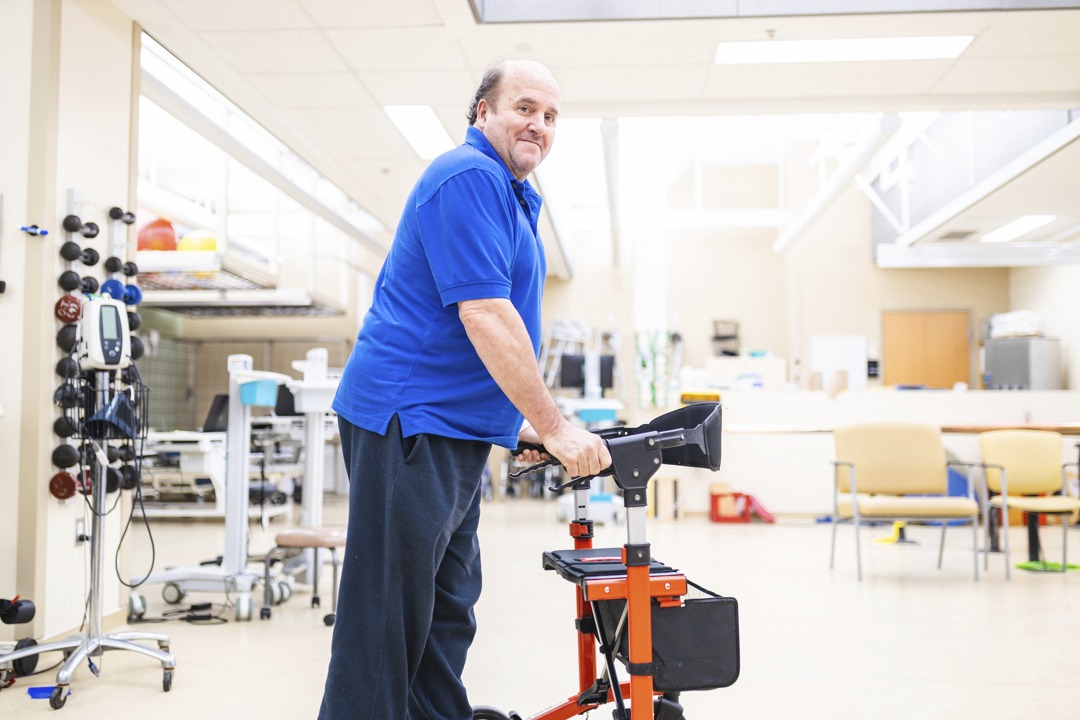
Turning back surgery on its side
New spinal fusion procedure a first for Hamilton
Dianne Laplante finally has a leg up on chronic, debilitating nerve pain thanks to a spinal fusion procedure that was a first for Hamilton Health Sciences (HHS), and possibly the province.
“I tried a lot of pain management treatments but nothing worked,” says Laplante, 58, of St. Catharines, who had the surgery in mid-September at Hamilton General Hospital after other non-surgical attempts to manage pain including injections and medications failed.

Dianne Laplante of St. Catharines in the first person in the region, and possibly the province, to undergo this new procedure.
“I’ve had back and leg issues for quite a long time, but two years ago the leg pain and numbness became excruciating,” says Laplante, who worked in retail for many years before being forced to leave her job due to unrelenting pain.
Wear-and-tear arthritis in her spine was the source of lower back pain, with nerve pain radiating down her right leg and wreaking havoc with her ability to stand, sit and sleep.
“It hurt so badly because of severe spasms, numbness and shooting pain. It was calling my attention 24/7 and nothing I tried could cut through the pain for more than a few days at a time.”
But Laplante’s future started to look more hopeful when she was referred by her local hospital to HHS, where she discussed surgery options with spinal neurosurgeon Dr. Daipayan (Deep) Guha.
Guha felt that Laplante would be an excellent candidate for direct lateral lumbar interbody fusion – a minimally-invasive procedure that had not yet been available at HHS. Guha believes HHS is either the first, or one of the first Ontario hospitals to do the procedure. This method of spinal surgery takes about one to two hours and is performed with the patient lying on their side instead of their back or front as is normally the case.

HHS spinal neurosurgeon Dr. Daipayan (Deep) Guha
Guha brought the technique to HHS after learning it while completing his neurosurgery spine fellowship at the University of Pittsburgh in Pennsylvania. Laplante is the first HHS patient to undergo a lateral lumbar interbody fusion.
Fusing back bones to decrease pain
A spinal fusion corrects problems with the small bones in the spine, called vertebrae, by fusing them together so they heal into a single, solid bone. When two or more arthritic vertebrae are fused together, they can no longer trigger the pain caused by movement between them.
The ‘lateral’ in lateral lumbar interbody fusion means that the patient is operated on from the side instead of the front or back. ‘Lumbar’ refers to the lower back, while ‘interbody’ refers to creating a bridge of bone after taking out most of the intervertebral disk – a ring-shaped disk, or cushion, that separates each vertebrae to absorb stress and shock, and prevent vertebrae from grinding together.

With this procedure, the disk separating vertebrae is replaced with a spacer like this to help with the fusion process, decompress pinched nerves and relieve pain.
With this procedure, this disk is removed and replaced with a spacer to encourage healing, help with the fusion process, decompress pinched nerves and relieve pain. With newer spacer materials, screws aren’t necessarily needed in select patients to hold the fusion together.
“While this is a mainstream procedure in the United States, it has not been available widely in Canada,” says Guha. “This was definitely a first at HHS and possibly also Ontario.”
Operating from the side provides many benefits
Performing surgery from the patient’s side instead of the back means a smaller incision; shorter surgery time (about one to two hours compared to three or more hours for the traditional surgery); less blood loss, less risk of infection and less time under anesthesia.
The large back muscles are preserved, because they’re not cut into and peeled back for the surgeon to reach the spine. Patients go home from hospital earlier and experience less pain during their recovery.
“With this procedure we’re able to take pressure off the nerves and also get people’s spine lined up better so they have less back pain,” says Guha.
The surgical team reviews a patient’s history to see if they would be a good candidate for this approach.
“For carefully selected patients it can be particularly helpful,” says Guha, who anticipates doing one such surgery per month.
The ideal patients are adults in their late 50s or older who are experiencing significant, unrelenting pain due to arthritis in their lower back, have exhausted all of the less invasive options including physiotherapy, weight loss, massage therapy, injections and medications, and have anatomy and imaging findings that allow for a safe lateral procedure.
“For this population, lateral lumbar interbody fusion surgery can help improve their quality of life,” says Guha.
Leg pain vanished
Laplante noticed a significant improvement as soon as she woke up from surgery.
“The pain and numbness in my leg was gone instantly and it hasn’t come back,” she says. “I still have back pain but my biggest concern was my leg because it was so severe.”
Eliminating leg pain was managed by indirect decompression, says Guha. “We were able to take pressure off the nerve even though we didn’t do a traditional decompression by cutting away the bone and the arthritic ligament. Instead, we used spacers to stretch ligaments out so they were taut. And because her leg got better very quickly while she was still in the hospital recovering, that indicated to us that the procedure worked well.”
Relief from back pain will take longer, because the area is still healing. But that should improve with more time, says Guha.
Laplante still uses a cane and walker, but says she’s improving every day.
“The surgery took away the worst pain,” she says. “I can sleep now for at least three or four hours in a row. That was impossible when I was dealing with leg pain. I’m definitely more comfortable now.”


